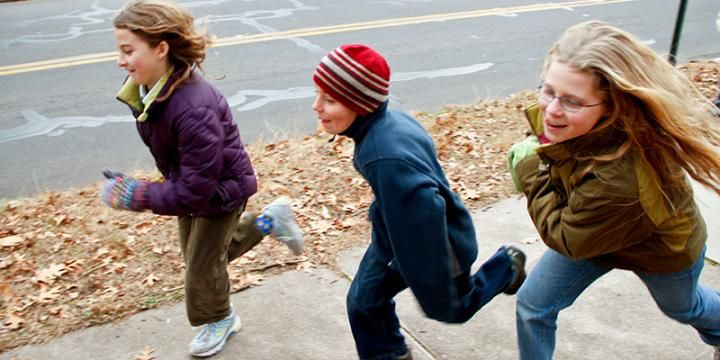Bullied Teens Can Reduce Suicide Risk And Improve Outlook On Life With A Few Hours Of Exercise Each Week

A kid getting picked last to play kickball is often used to depict bullying in movies and television. However, it seems that physical activity could be a bullied teen’s best option for improving their mental health. A recent study conducted by researchers from the University of Vermont has found that children who fall victim to bullying can reduce their risk for attempting suicide by 23 percent with exercise.
"I was surprised that it was that significant and that positive effects of exercise extended to kids actually trying to harm themselves," said lead author Jeremy Sibold, associate professor and chair of the Department Rehabilitation and Movement Science, in a statement. "Even if one kid is protected because we got them involved in an after-school activity or in a physical education program it's worth it."
Sibold and his colleagues gathered data using the Centers for Disease Control and Prevention’s National Youth Risk Behavior Survey, which included responses from 13,583 high school students. Bullied teens tend to be at a higher risk for sadness, poor academic performance, low self-esteem, anxiety, depression, and substance abuse. While a number of previous studies have shown a relationship between exercise and improvements in mental health, this is the first to establish a link between exercise and reductions in suicidal thoughts.
Around 30 percent of students from the study reported feeling sad for two or more weeks in the previous year. Bullied students were twice as likely to report feeling sad compared to students who were not bullied. Over 22 percent of students reported thoughts of suicide, while 8.2 percent reported actual suicide attempts. Students who reported exercising four or more days per week experienced significant reductions in sadness and lowered their risk for suicidal thoughts and attempts by 23 percent.
"It's scary and frustrating that exercise isn't more ubiquitous and that we don't encourage it more in schools," Sibold added. "Instead, some kids are put on medication and told 'good luck.' If exercise reduces sadness, suicide ideation, and suicide attempts, then why in the world are we cutting physical education programs and making it harder for students to make athletic teams at such a critical age?"
According to a report from the Institute of Medicine of the National Academies, 44 percent of schools across the United States have cut a substantial amount of time from physical education, arts, and recess in order to add more time to reading and mathematics since the No Child Left Behind Act was passed in 2001. Only around half of America’s youth meets the U.S. Health and Human Service Department’s physical activity guidelines for at least 60 minutes of vigorous to moderate-intensity exercise each day.
"Considering the often catastrophic and long lasting consequences of bullying in school-aged children, novel, accessible interventions for victims of such conduct are sorely needed," the research team explained.
The CDC’s biennial survey of high school students in the U.S. revealed that nearly half were getting no type of physical education class in any given week. Sadly, around 20 percent of students report being bullied on school grounds.
Source: Hudziak J, Murray-Close D, Edwards E, Sibold J. Physical Activity, Sadness, and Suicidality in Bullied US Adolescents, Clinical Guidance. Journal of the American Academy of Child & Adolescent Psychiatry. 2015.
Published by Medicaldaily.com



























